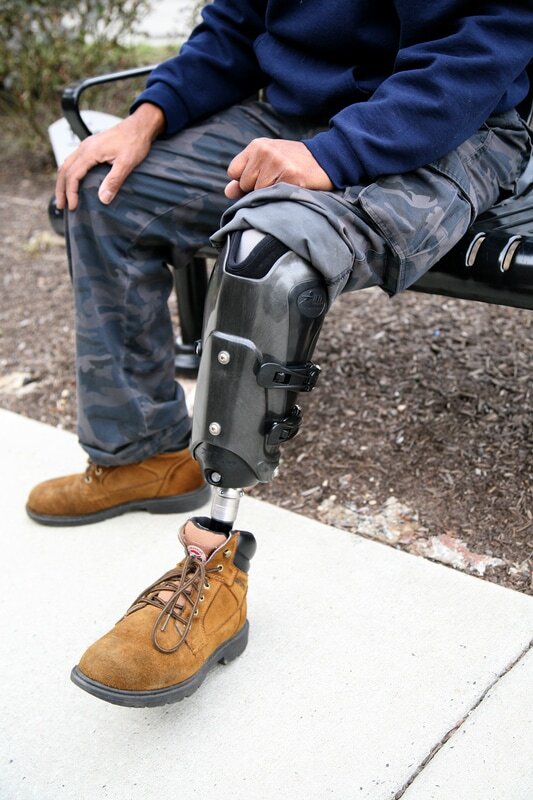Introduction:
Prosthetic fitting is an intricate and essential aspect of the prosthetic journey. The prosthetic socket, in particular, serves as the crucial interface between an amputee’s residual limb and their prosthetic device. A well-fitted prosthetic socket can significantly impact an individual’s comfort, mobility, and overall quality of life. In this article, we will explore the art and science behind prosthetic fitting, focusing on the prosthetic socket’s pivotal role in achieving a successful and functional prosthetic limb.
Understanding Prosthetic Fitting:
Prosthetic fitting is the process of customizing and attaching a prosthetic limb to an individual’s residual limb. It involves precise measurements, assessments, and the creation of a prosthetic socket tailored to the individual’s unique anatomy and functional requirements. This process is a collaborative effort between the amputee, the prosthetist (a healthcare professional specializing in prosthetic care), and often other members of the rehabilitation team.
The Prosthetic Socket: A Vital Component:
The prosthetic socket is the most critical element of any prosthetic limb. It serves several essential functions:
Weight Bearing: The socket distributes the body’s weight evenly across the residual limb, preventing pressure points and discomfort.
Stability: It provides stability and support, allowing the amputee to stand, walk, and engage in various activities with confidence.
Comfort: A well-designed socket minimizes friction, pressure, and skin irritation, ensuring comfort during prosthetic use.
Control: The socket’s design and fit influence the wearer’s control over the prosthetic limb, enabling natural movement.
Load Transmission: It helps transfer forces generated during movement from the prosthetic limb to the residual limb, facilitating efficient gait patterns.
Factors Influencing Prosthetic Socket Design:
Achieving a successful prosthetic fitting with a well-fitted socket requires careful consideration of various factors:
Residual Limb Anatomy: Each individual’s residual limb has a unique shape, size, and condition, necessitating a custom socket design.
Functional Goals: The prosthetist works closely with the amputee to understand their specific goals, whether it’s walking, running, cycling, or engaging in sports.
Skin Condition: The condition of the skin on the residual limb is critical to prevent irritation, sores, and infections. Proper socket design takes skin health into account.
Gait Analysis: The prosthetist may perform a gait analysis to assess the amputee’s walking patterns, helping tailor the socket for optimal movement.
Socket Material: The choice of material for the socket can impact its durability, weight, and comfort. Modern options include thermoplastics, carbon fiber, and silicone.
The Prosthetic Fitting Process:
The process of prosthetic fitting, with a focus on the prosthetic socket, typically follows these steps:
Assessment: The initial assessment involves a comprehensive evaluation of the residual limb. Measurements, skin condition, muscle strength, and range of motion are assessed.
Casting or Scanning: Depending on the prosthetist’s approach, they may use traditional plaster casting or modern 3D scanning technology to create an accurate mold of the residual limb.
Custom Socket Design: Using the measurements and mold, the prosthetist designs a custom socket that fits the individual’s residual limb perfectly.
Initial Fitting: The amputee tries on the initial socket to assess its comfort and fit. Adjustments are made as needed to achieve an optimal fit.
Alignment: Proper alignment of the prosthetic limb is crucial for balance and gait. The prosthetist fine-tunes the alignment during the fitting process.
Gait Training: Once the prosthetic limb is assembled, the amputee undergoes gait training to learn how to walk and move naturally with their new limb.
Follow-Up Care: Regular follow-up appointments are essential to monitor the fit of the socket and make any necessary adjustments as the residual limb changes over time.
Challenges in Prosthetic Fitting:
Prosthetic fitting can present several challenges, including:
Residual Limb Changes: The residual limb’s size and shape can change over time, necessitating adjustments to the socket.
Skin Sensitivity: Some individuals may have sensitive skin, making it crucial to prevent friction and irritation in the socket.
Comfort vs. Functionality: Balancing comfort and functionality can be challenging, as some adjustments may impact one aspect over the other.
Conclusion:
Prosthetic fitting, with the prosthetic socket at its core, plays a pivotal role in the lives of individuals with limb loss. Achieving the perfect fit requires a combination of clinical expertise, cutting-edge technology, and a deep understanding of the wearer’s unique needs and goals. As prosthetic technology continues to advance, prosthetic fitting will continue to evolve, empowering amputees to lead active, fulfilling lives with their prosthetic limbs. The prosthetic socket, as the bridge between the residual limb and the prosthetic device, will remain at the forefront of these innovations, making strides in comfort, mobility, and quality of life for amputees worldwide.


